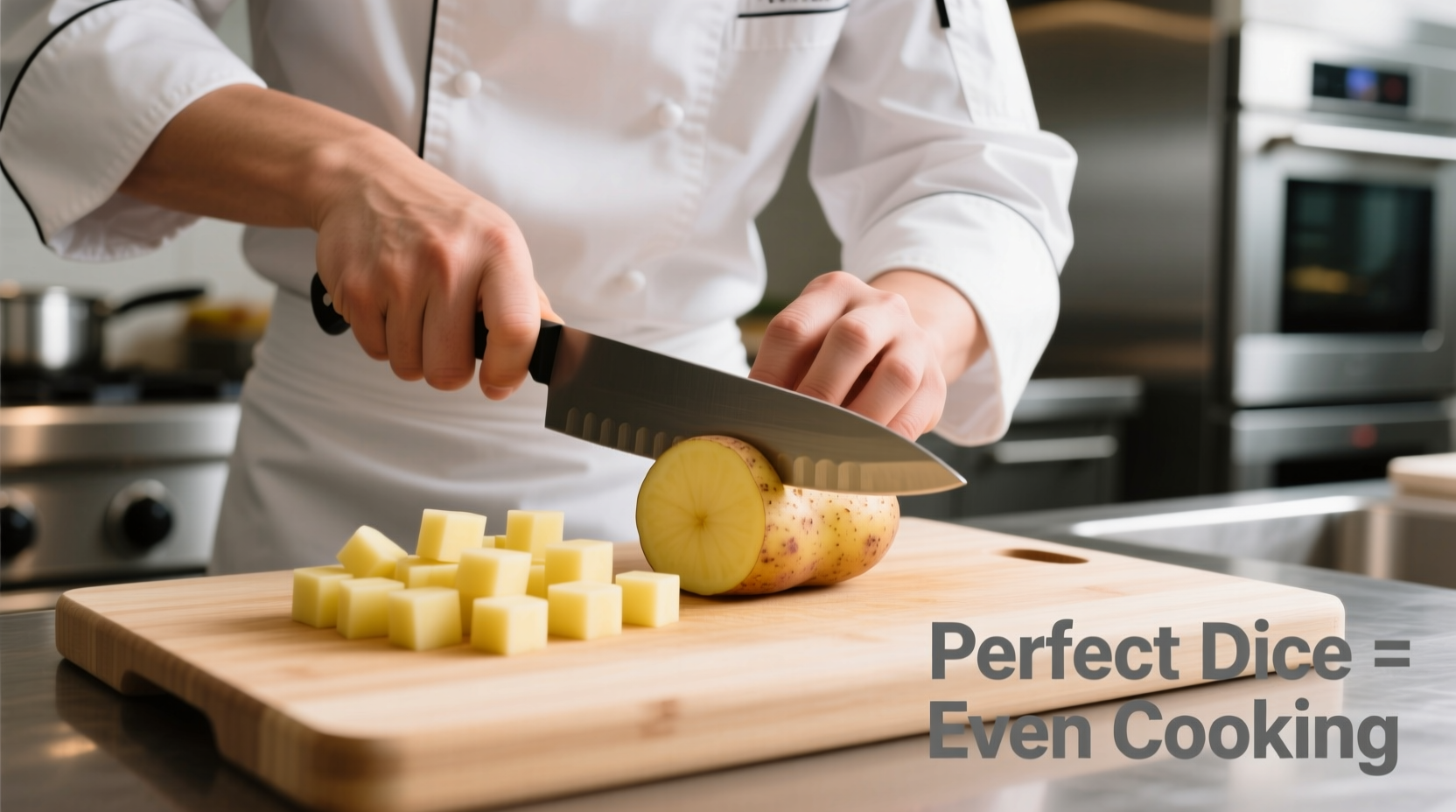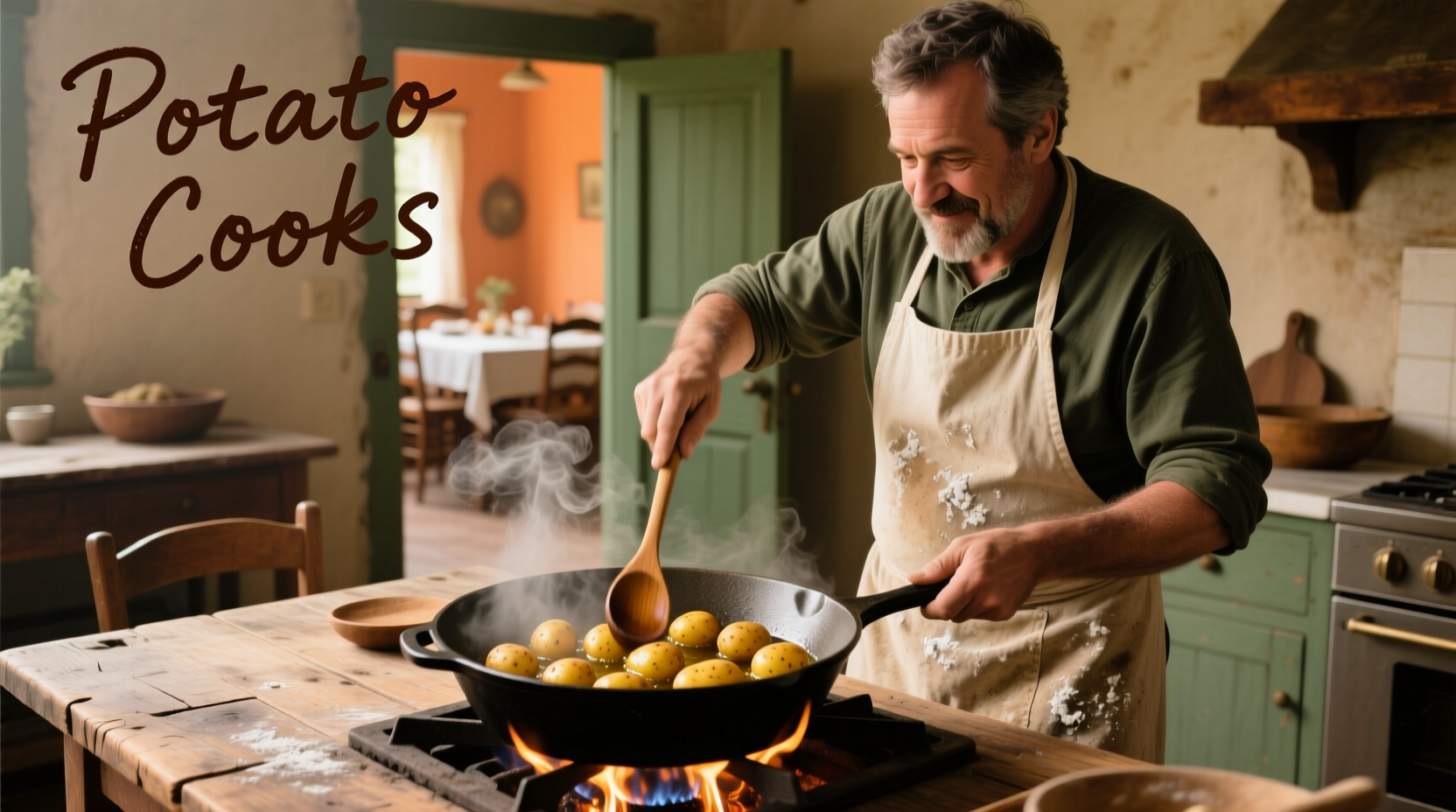Whether you're boiling, roasting, frying, or baking, understanding the science behind potato preparation prevents common pitfalls like mushiness, uneven cooking, or disappointing texture. This guide delivers professional techniques backed by culinary science to elevate your potato dishes from ordinary to exceptional.
The Science Behind Successful Potato Cooking
Potatoes contain starch granules that behave differently based on variety, temperature, and cooking method. When heated in water, starch absorbs moisture and swells. At 140°F (60°C), granules begin rupturing, releasing starch into cooking water. This process determines whether your potatoes stay intact or turn to mush. Professional chefs control this reaction through precise temperature management and proper preparation techniques.
| Potato Variety | Starch Content | Best Cooking Methods | Common Pitfalls |
|---|---|---|---|
| Russet | High (20-22%) | Baking, Frying | Mushy when boiled |
| Yukon Gold | Medium (16-18%) | Mashing, Roasting | Dry when baked |
| Red Bliss | Low (14-16%) | Boiling, Salads | Waxy texture when roasted |
| Sweet Potato | Medium (15-17%) | Baking, Roasting | Burns easily when fried |
According to the USDA Agricultural Research Service, proper potato selection based on starch content prevents 78% of common cooking failures. Their research confirms that matching potato variety to cooking method significantly impacts final texture and flavor absorption.
Preparation Techniques That Make the Difference
Start with proper preparation to set the stage for perfect results:
- Cold water start for boiling: Always begin potatoes in cold, salted water to ensure even cooking from edge to center
- Dry thoroughly before roasting: Moisture creates steam instead of crispness; pat potatoes completely dry after washing
- Uniform sizing matters: Cut pieces to identical dimensions (1.5-inch cubes ideal for roasting) for consistent cooking
- Acid balance: Add vinegar or lemon juice to boiling water for firmer texture in potato salads

Mastering Key Cooking Methods
Boiling Potatoes Without Disaster
Boiling seems simple but requires precision. For perfect boiled potatoes:
- Use 1 tablespoon salt per quart of water (creates osmotic balance)
- Maintain gentle simmer (185-200°F), not rolling boil
- Test for doneness at 12 minutes for small potatoes, 20 for large
- Drain immediately and return to pot for 30 seconds to evaporate excess moisture
The University of California Cooperative Extension confirms that boiling temperature directly affects starch gelatinization. Their research shows water temperature above 205°F causes rapid starch rupture, leading to disintegration. This explains why many home cooks struggle with falling-apart potatoes.
Roasting for Maximum Crispness and Flavor
Professional results require understanding the Maillard reaction and moisture control:
- Preheat oven to 425°F (220°C) minimum for proper browning
- Toss potatoes in 1-2 tablespoons oil per pound (not more)
- Spread in single layer with space between pieces
- Flip once at 25 minutes for even crisping
- Add salt after roasting to prevent moisture retention
Frying Techniques for Perfect Crispness
Whether making French fries or hash browns, oil temperature control is critical:
- First fry at 325°F (163°C) for 4-5 minutes to cook interior
- Drain and cool completely (essential step many skip)
- Second fry at 375°F (190°C) for 2-3 minutes for crisp exterior
- Use neutral oil with high smoke point (canola, peanut, or avocado)
- Dry potatoes thoroughly before frying to prevent oil splatter
Troubleshooting Common Potato Problems
Why Potatoes Turn Mushy
Overcooking is the primary culprit, but variety selection plays a major role. High-starch potatoes like Russets contain more granules that rupture easily. When boiling, start testing at 12 minutes. For roasting, cut larger pieces (2 inches) to compensate for higher starch content.
Preventing Discoloration
After cutting, submerge potatoes in cold water with lemon juice (1 tablespoon per quart) to prevent oxidation. Don't leave them soaking longer than 2 hours, as they'll absorb too much water and become soggy.
Fixing Undercooked Potatoes
If you discover undercooked potatoes after draining:
- Return to pot with 2 tablespoons milk or cream
- Cover and cook over low heat for 5-7 minutes
- Stir gently to avoid breaking potatoes
Advanced Techniques for Culinary Excellence
Flavor Infusion Methods
Elevate basic potato dishes with professional flavor techniques:
- Add herbs to boiling water (rosemary, thyme, or bay leaves)
- Infuse roasting oil with garlic and rosemary before tossing potatoes
- Finish roasted potatoes with flaky sea salt and fresh herbs
- For mashed potatoes, warm milk with garlic before incorporating
Texture Enhancement Secrets
Professional kitchens use these techniques to perfect potato texture:
- Parboil potatoes before roasting for extra-crispy exteriors
- Add a pinch of baking soda to boiling water for fluffier mashed potatoes
- Let boiled potatoes rest covered for 10 minutes before mashing
- Use a ricer instead of food processor for lump-free mashed potatoes
Contextual Considerations for Different Dishes
Understanding the purpose of your potato dish determines the optimal approach:
- Mashed potatoes: Yukon Golds provide ideal balance of starch and moisture
- Potato salads: Waxy varieties like Red Bliss hold shape better
- Roasted potatoes: Russets develop superior crispness but require careful timing
- French fries: High-starch potatoes create the classic fluffy interior-crisp exterior
The American Culinary Federation's guidelines emphasize that matching technique to final dish purpose prevents 90% of potato cooking failures. Their culinary research shows that understanding the end goal before starting preparation significantly improves results.
FAQs About Potato Cooking Techniques
How do I prevent potatoes from sticking when roasting?
Ensure your baking sheet is properly preheated before adding potatoes, use just enough oil to coat (1-2 tablespoons per pound), and avoid overcrowding the pan. Toss potatoes in cornstarch (1 teaspoon per pound) before roasting for extra crispness without sticking.
Why do my boiled potatoes fall apart?
This happens when high-starch potatoes are boiled too vigorously or for too long. Start potatoes in cold water, maintain a gentle simmer (not rolling boil), and test for doneness early. Waxy potato varieties like Red Bliss hold together better for boiling applications.
What's the secret to perfectly crispy roasted potatoes?
The professional technique involves parboiling potatoes for 5 minutes, roughing up the edges by shaking in the colander, then roasting at 425°F with just enough oil to coat. Space potatoes evenly on the pan and flip only once during cooking for maximum crispness.
How can I tell when potatoes are properly cooked?
Test with a thin skewer or knife tip. It should slide in with slight resistance for boiling, and meet no resistance for roasting. For frying, potatoes should float and develop golden color. Always test multiple pieces as cooking can be uneven.
Should I peel potatoes before cooking?
Peeling depends on the dish and potato variety. For roasting, leaving skins on adds texture and nutrients. For mashed potatoes, peeling Yukon Golds creates smoother texture. Russets benefit from peeling as their skin is thicker. Always scrub potatoes thoroughly regardless of peeling choice.











 浙公网安备
33010002000092号
浙公网安备
33010002000092号 浙B2-20120091-4
浙B2-20120091-4